
OVERVIEW
Earth Day is coming up and it’s such a fun day to celebrate in school. Not only is it an important reminder of our collective responsibility to care for the planet, but it is also a great excuse to get outside or walk through the school to find materials to create a work of art. Use the found materials to create found object assemblages, one of my favorite sculpture projects to teach. This is a perfect Earth Day art project or any day project in your art class.
This project is versatile, catering to different age groups and skill levels. While it can be taught as a class lesson with fifth graders (any younger and the concepts become too complex. With 5th-8th grade students you will need to be prepared to offer a lot of guidance and help through the process), it also works as a small group art lesson in middle school or even as an individual or paired activity in high school art classes. Regardless of the setting, the goal is the same: to foster an appreciation for the environment and artistic expression by using found objects and recyclables in a creative work of art.
QUICK STEPS:
To guide students through the Earth Day art assemblage project, a structured approach is essential. Begin with an introduction to the concept of assemblage sculpture, drawing inspiration from the works of artists such as Tara Donovan and John Dahlsen. Engage students in discussions about materials and compositions, encouraging them to think critically about their artistic choices. Provide studio time for experimentation and creation, offering guidance and feedback along the way. I love taking time for in-progress and final critiques to help students with their focal points and compositions.
Hit the easy button and get everything you need to teach this project (minus the supplies) on my website here or TPT shop here.
STEP ONE: GATHER SUPPLIES
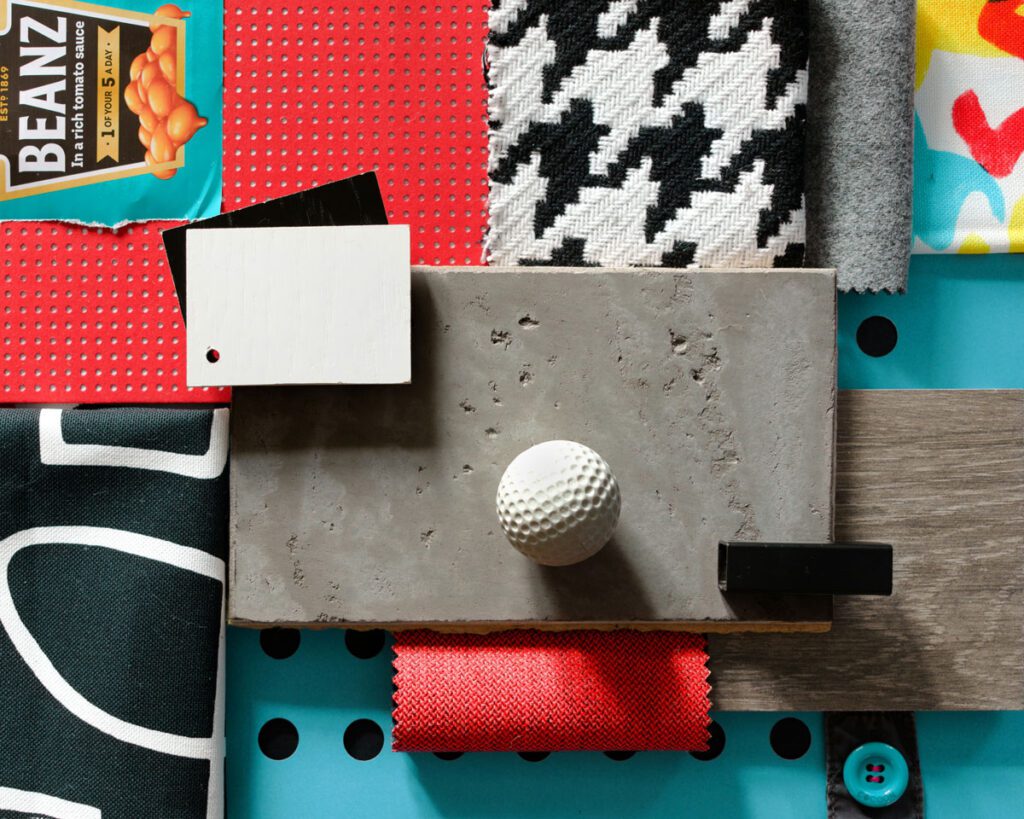
Before diving into the creative process, students have to gather the necessary materials. Encourage students to think about what materials they can easily get in larger quantities. Take a walk through school as a class, and look in recycling bins, even trash cans to see what materials are being thrown away. Go to the library to check for newspapers and books they no longer need. Think about materials that can be gathered at home or from local restaurants such as cans, bottle caps, water bottles, and similar. From plastic bottles and bottle tops to newspapers and cardboard, there are many options students can choose from. Additionally, have hot glue, glue sticks, and other adhesives on hand, along with wood panels to serve as the base for the assemblage sculptures.
For the wood panels, I recommend dimensions of 24”x24” or 12”x24.” I purchase these through Cheap Joe’s Art Stuff, grab the unprimed cradled wood panels. Flip the wood panels over and work in the cradle of the panel. This creates a recessed space to attach materials and a natural frame for the work of art.
STEP TWO: PREP SUPPLIES
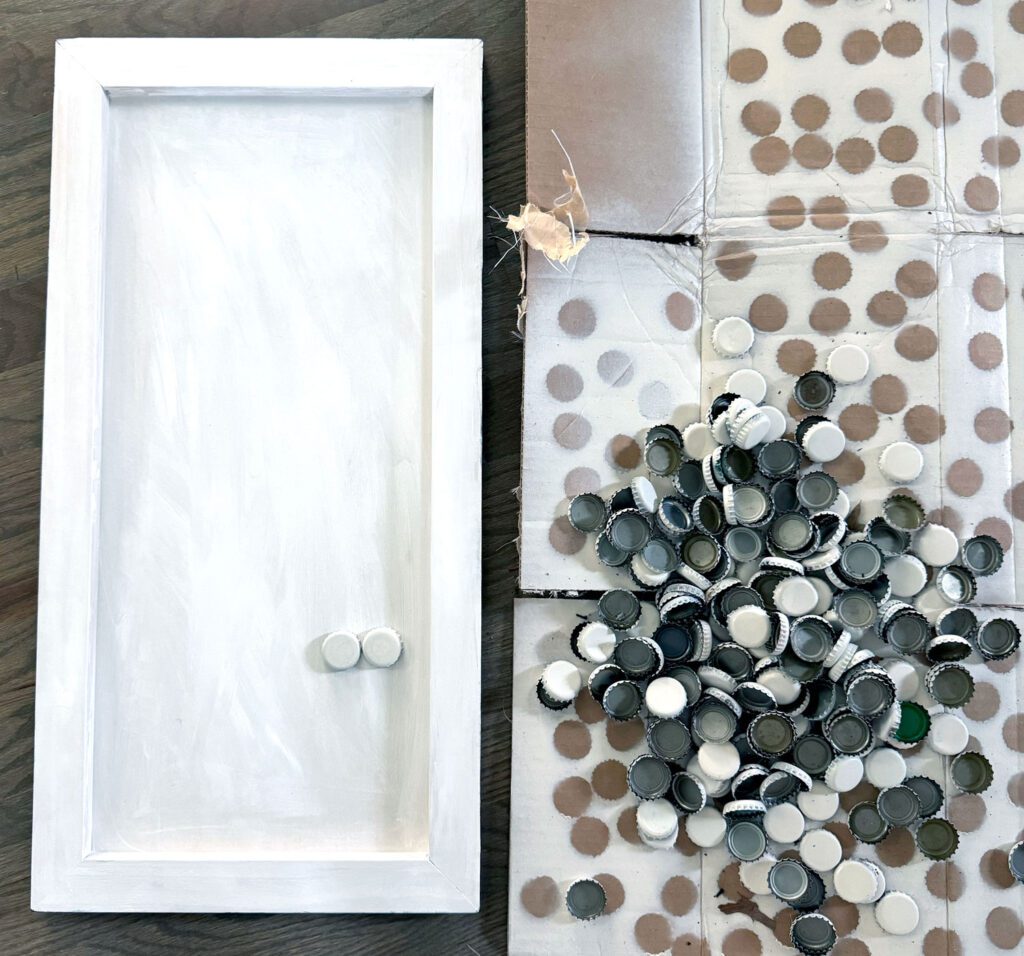
With materials in hand, it’s time to start the Earth Day art project. Encourage students to brainstorm ways to manipulate the materials to create a cohesive work of art. Whether organizing the materials by color, texture, or pattern, the key lies in experimenting and brainstorming before attaching materials to the panel. Additionally, consider how to prep the wood panel for the attachment of materials, whether through painting, drawing, or other methods.
ASSEMBLAGE COMPOSITION
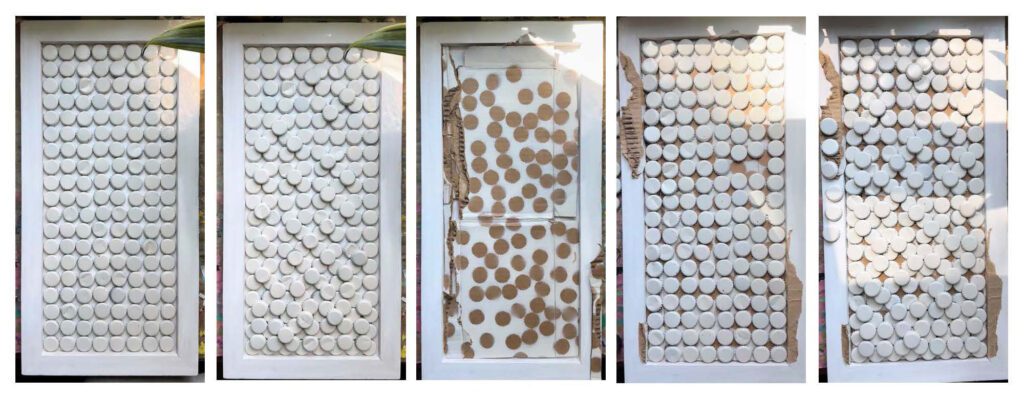
Once the materials are prepped, encourage students to explore various compositions and placements before committing to a final design. Emphasize elements such as focal points, balance, unity, variety, and texture. During studio time I like to walk around the class and brainstorm with students one on one. Make sure students come to you for a final chat before they begin attaching materials to their wood panel.
EARTH DAY ART PROJECT DISPLAY

With Earth Day on the horizon, you can start the project now, and display them on Earth Day, or introduce the project on Earth Day and display them towards the end of the school year. To wrap up the project have students write artist statements sharing the process, materials used, and intent behind their work of art. Display the assemblages with the artists’ statements. These projects are always a big hit at my annual art show.
WRAPPING UP
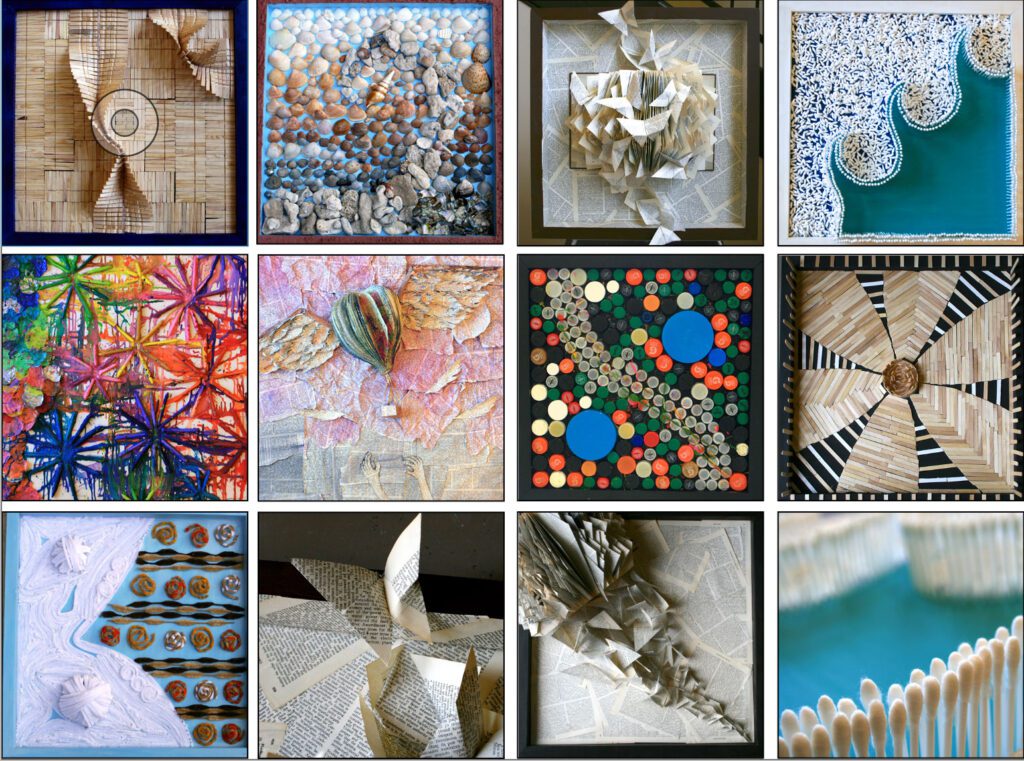
Use Earth Day as an opportunity to instill a deep appreciation for both art and the environment. Through projects like the assemblage Earth Day art project, we can inspire creativity while fostering a sense of environmental stewardship. Celebrate Earth Day not just with words, but with art that speaks volumes about our commitment to preserving the planet for future generations. If Earth Day has already passed or is too far off, remember, you can always focus on an appreciation for the environment and discuss found object works of art any day of the year!
OTHER EARTH DAY ART IDEAS
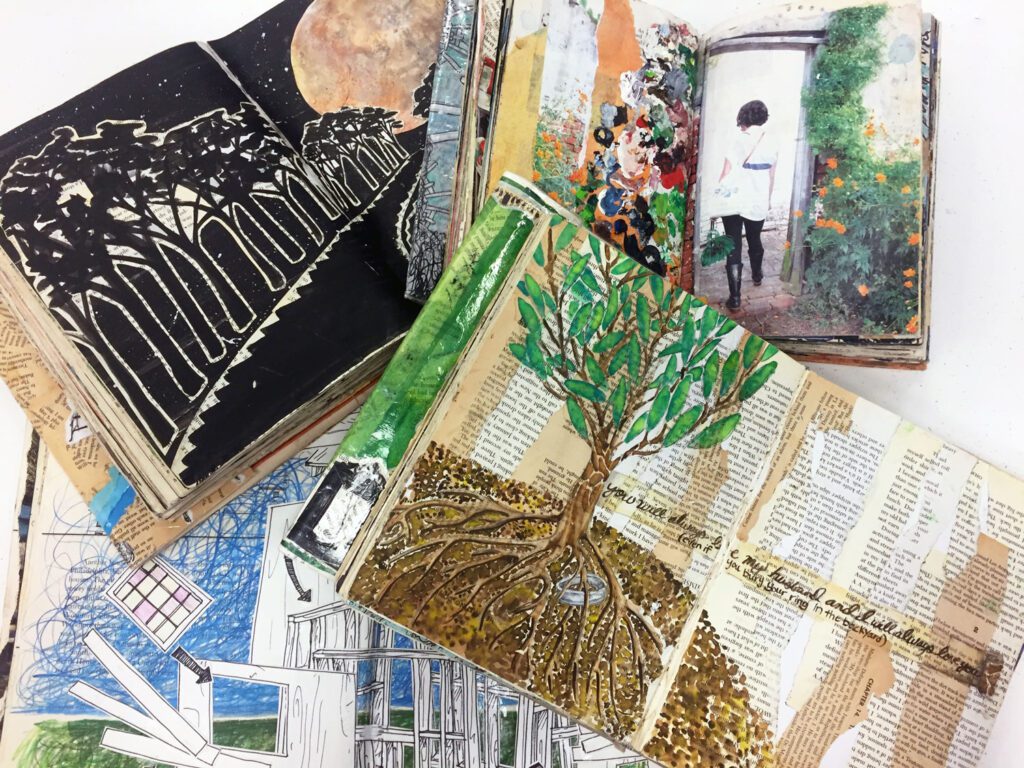
If you need quick Earth Day art project ideas look into collage projects such as Artist Trading Cards. Focus on reusing magazines and newspapers to create mini works of art. This can easily be a one-day art project. Hit the easy button and check out my lesson pack here.
Another favorite Earth Day art project is visual journals. Although I like to teach this project all year long, you can focus on the benefits of recycling old books and magazines and using found objects to collage with, in the books. Check out my visual journal art pack here or my visual journal virtual classes here.
I hope you have an amazing Earth Day (coming up on April 22, 2024!). Don’t forget you can hit the easy button and get everything you need to teach this project (minus the supplies) on my website here or TPT shop here.
HAPPY EARTH DAY!
Don’t forget to follow me on Instagram and TikTok for weekly visual journal demos and other project ideas. Subscribe here to get freebies, project tutorials, and more straight to your inbox. Until next time!
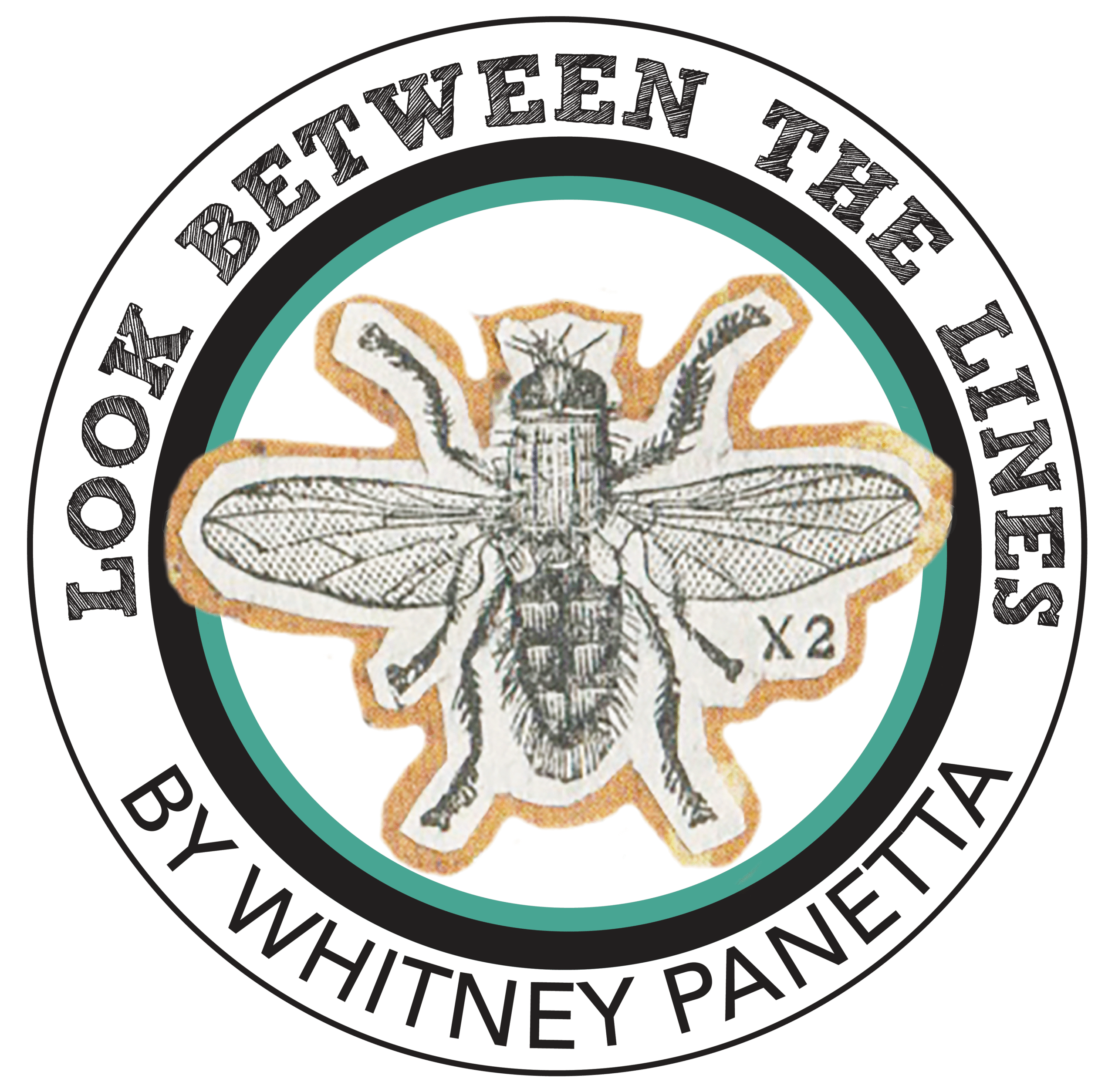
0 Comments